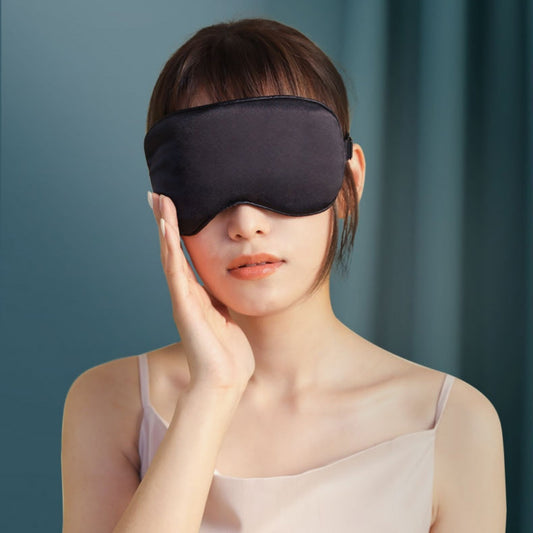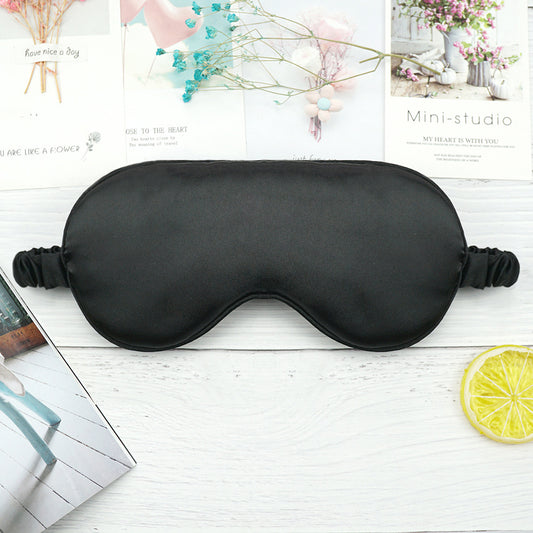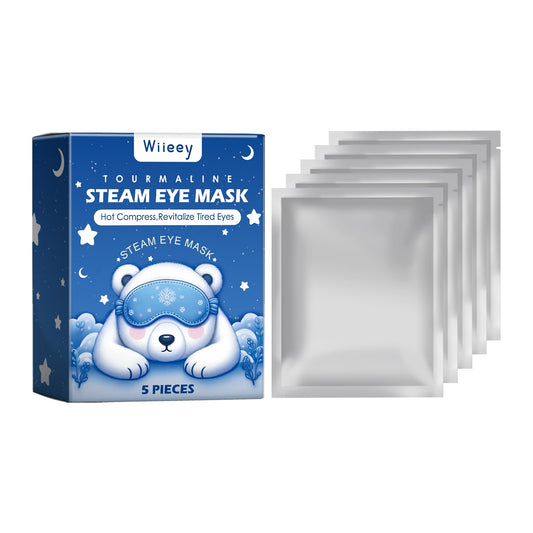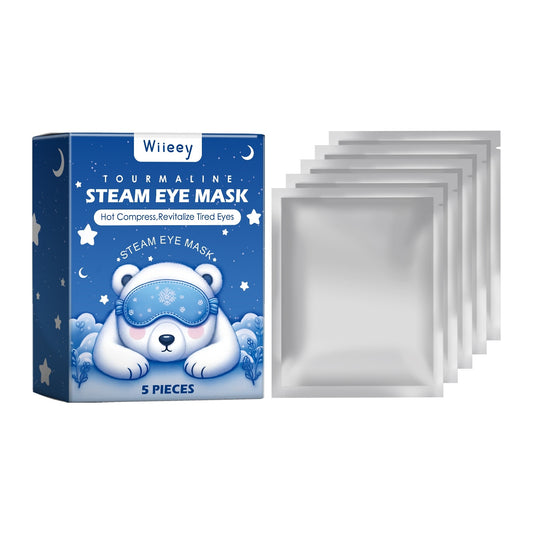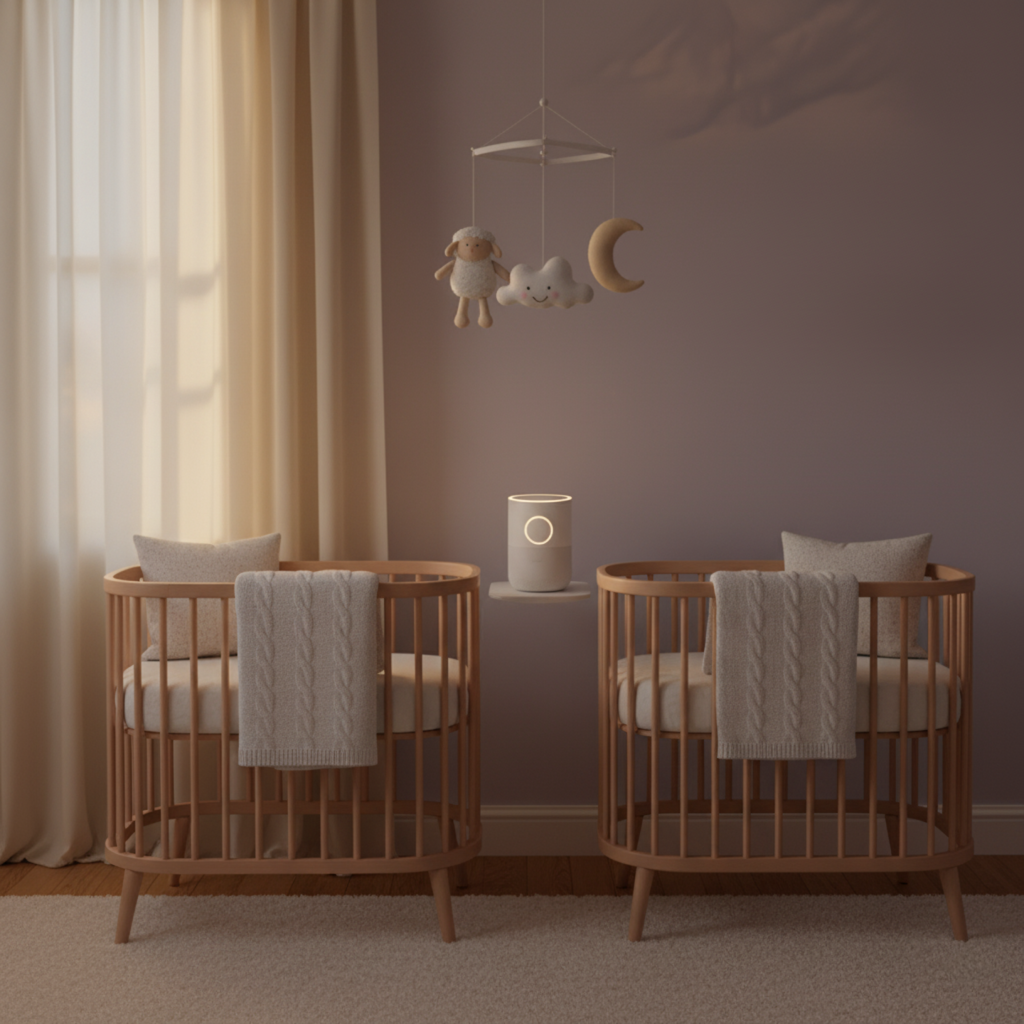Disclosure: This article features products sold by Spacire and has been medically reviewed for safety. Read our full transparency standards.
Essential Safety Guidelines at a Glance
- Maximum Volume: Keep white noise at 50 decibels or less – roughly the sound of a quiet conversation or light rainfall
- Safe Distance: Place machines at least 7 feet (2 meters) away from your baby's crib to prevent hearing damage
- Duration: Consider using a timer to shut off after 30-60 minutes once baby is asleep, rather than all-night use
- Age Guidelines: Safe from birth when used properly, but always follow AAP safe sleep recommendations
- Sound Selection: Choose consistent, low-pitched sounds like white or pink noise over nature sounds with variable patterns
- Never place machines inside the crib or attached to crib rails – this poses both safety and hearing risks
Every parent knows the struggle: your precious little one fights sleep, startles at every sound, and seems to have their days and nights reversed.
White noise machines have become a popular solution, with studies showing they can help babies fall asleep 38% faster[1]. But with this popularity comes important safety considerations.
The American Academy of Pediatrics (AAP) supports the use of white noise for infant sleep when used correctly, but recent studies have raised concerns about improper use potentially affecting hearing development[2].
This comprehensive guide will help parents in the United Kingdom, United States, Canada, Australia, Germany, France, Spain, Italy, Netherlands, Belgium, Switzerland, Sweden, Denmark, Norway, Finland, Ireland, New Zealand, Singapore, Japan, Brazil etc understand exactly how to use white noise safely for their babies.
🛡️ The 4 Pillars of Safe White Noise Use
Understanding Safe Sound Levels: The Science Behind the Guidelines
A landmark 2014 study published in Pediatrics tested 14 popular infant sleep machines and found that all of them exceeded 50 dB when placed at crib rail distance, and some reached levels of 85 dB – as loud as a lawn mower[3]. This discovery led to current safety recommendations.
Sound Level Safety Guide
30-40 dB: Whisper | 50 dB: Quiet conversation (MAXIMUM for babies) | 70 dB: Vacuum cleaner | 85 dB: City traffic | 100 dB: Motorcycle
To put this in perspective, prolonged exposure to sounds above 85 dB can cause permanent hearing damage in adults, and infants' developing ears are even more sensitive[4].
The good news? When used at appropriate volumes and distances, white noise machines are completely safe and beneficial.
Why Do Babies Sleep Better with White Noise?
Understanding why white noise works helps parents use it more effectively. The womb is surprisingly noisy – about 90 dB of constant whooshing from blood flow and digestive sounds[5].
After birth, the silence of a nursery can actually be unsettling for newborns.
White noise works through several mechanisms:
1. Auditory Masking: It creates a consistent sound backdrop that prevents sudden noises from triggering the startle reflex (Moro reflex), which is particularly strong in babies under 4 months[6].
2. Neurological Calming: Studies show that rhythmic sounds can synchronize with infant brain waves, promoting the transition from light to deep sleep[7].
3. Sleep Association: When used consistently, white noise becomes a powerful sleep cue that signals bedtime, making sleep training more effective[8].
White Noise Through Your Baby's First Year
AAP Guidelines and Professional Recommendations
The American Academy of Pediatrics doesn't explicitly recommend for or against white noise machines, but they do provide clear guidance on safe use[9].
Dr. Harvey Karp, pediatrician and author of "The Happiest Baby on the Block," advocates for white noise as one of the "5 S's" for soothing babies, when used safely[10].
Key professional recommendations include:
• Start low and slow: Begin with the lowest volume that's effective, typically around 40-45 dB
• Test with a sound meter app: Many free smartphone apps can measure decibel levels accurately
• Consider combination approaches: White noise works best as part of a comprehensive sleep routine including swaddling (for babies under 2 months who aren't rolling), consistent bedtime, and a dark room
• Monitor for dependency: While not harmful, some babies may become reliant on white noise. Plan for gradual weaning if desired
DO's for Safe White Noise Use
- Place machine across the room from crib
- Use a sound meter to verify safe levels
- Choose machines with volume limiters
- Opt for consistent, low-frequency sounds
- Use timer functions when available
- Clean machines regularly to prevent dust buildup
- Test different sounds to find what works
- Combine with other safe sleep practices
DON'Ts to Avoid
- Never place inside or attached to the crib
- Don't exceed 50 dB volume levels
- Avoid machines without volume control
- Don't use earphones or headphones on babies
- Never cover machine vents (fire hazard)
- Don't rely solely on white noise for sleep
- Avoid sudden volume changes
- Don't use damaged or recalled devices
Choosing the Right White Noise Machine for Your Baby
Not all white noise machines are created equal. When selecting one for your nursery, prioritize safety features over fancy extras. We've carefully reviewed machines in our collection that meet strict safety criteria for infant use.
Important Safety Features to Look For:
✓ Volume limiter or clear volume markings
✓ Stable base that won't tip over
✓ No small parts or removable pieces
✓ Battery backup for power outages
✓ Timer function for automatic shutoff
✓ Cord management or cordless options
Recommended Baby-Safe White Noise Machines

Aetherzx Portable White Noise Night Light USB Cup
- Compact, portable design
- Soft night light feature
- USB powered - no batteries needed
- Perfect for nursery placement

Glowzx White Noise Sleep Sound Machine RGB
- Multiple white noise options
- Gentle RGB night light
- Bluetooth control from distance
- Rechargeable battery

Acousticax White Noise Speaker with Touch Lights
- Touch-controlled operation
- Multiple sound options
- Compact for shelf placement
- Dual function: sound + light
Premium Options with Advanced Safety Features

Again White Noise Night Light with Smart Timer
- 30/60/90 minute auto-timer
- 26 soothing sounds
- 8 gentle lighting modes
- Memory function

Chronos White Noise Machine Type-C
- Professional-grade sound quality
- Auto timer shutdown
- 1200mAh battery backup
- Compact, stable design

Aetherat White Noise Humidifier
- White noise + humidification
- Bird chirp nature sounds
- 200ml capacity
- Essential oil compatible
Age-Specific Guidelines and Recommendations
Common Concerns and Expert Answers
Will my baby become dependent on white noise?
While some babies do develop a sleep association with white noise, this isn't harmful.
Sleep associations that don't require parental intervention (like white noise) are actually considered positive by sleep experts[11]. If you wish to wean off white noise, you can gradually reduce the volume over several weeks.
Can white noise mask important sounds like crying?
When used at safe volumes (50 dB or less) and proper distances, white noise won't mask a baby's cries.
Baby monitors should always be used in addition to white noise, and many modern monitors have features that detect crying above ambient noise levels.
Is it safe to use white noise apps on smartphones?
While apps can work in a pinch, dedicated machines are safer for regular use. Smartphones emit electromagnetic radiation and blue light, and notifications can disrupt the sound.
If using an app, place the phone in airplane mode, at least 6 feet from baby, and ensure it's plugged in to avoid battery death.
Creating the Optimal Sleep Environment
White noise is most effective as part of a comprehensive sleep environment. The AAP recommends these additional safe sleep practices[12]:
Room Temperature: Keep the nursery between 68-72°F (20-22°C). Overheating is a SIDS risk factor.
Darkness: Use blackout curtains or shades. Even small amounts of light can disrupt infant sleep cycles.
Safe Sleep Surface: Always place baby on their back on a firm mattress with only a fitted sheet. No blankets, pillows, or toys in the crib.
Room Sharing: The AAP recommends room sharing (but not bed sharing) for at least the first 6 months, ideally the first year.
Troubleshooting Common White Noise Issues
Baby seems agitated by white noise: Try pink or brown noise instead. Some babies prefer lower frequencies. Start with very low volume and increase gradually.
White noise stops working: This often happens around 4-6 months. Try adjusting the volume slightly or switching to a different frequency. Sometimes babies outgrow the need.
Traveling without the machine: Portable options are ideal for travel. In emergencies, a fan or air purifier can provide similar benefits. Many hotels also provide white noise machines upon request.
Multiple children sharing a room: Place the machine equidistant from both children. You may need to experiment with placement and volume to find what works for both.
When to Consult Your Pediatrician
While white noise is generally safe, consult your pediatrician if:
• Your baby shows signs of hearing issues (not responding to sounds, delayed speech)
• Sleep problems persist despite consistent white noise use and good sleep hygiene
• You notice any unusual reactions to sound
• Your baby was premature or has any hearing-related risk factors
• You have concerns about your specific white noise setup
The Research: What Science Tells Us
Multiple studies support the safe use of white noise for infant sleep. A study of 40 newborns found that 80% fell asleep within 5 minutes with white noise, compared to only 25% without it[13].
Research from the University of Toronto showed that white noise can reduce the duration of crying episodes in colicky babies by up to 38%[14]. This is particularly significant given that excessive crying is a risk factor for parental stress and potential harm to infants.
Long-term studies have found no negative effects on hearing or development when white noise is used at appropriate levels[15]. In fact, better sleep quality in infancy is associated with improved cognitive development and emotional regulation later in childhood.
Conclusion: Safe Sleep is Sound Sleep
White noise can be a powerful tool in your baby sleep toolkit when used correctly. By following the safety guidelines – maintaining proper distance, controlling volume, and choosing appropriate machines – you can help your baby sleep better while protecting their developing ears.
Remember, every baby is unique. What works perfectly for one might not work for another. Start conservatively with lower volumes and greater distances, then adjust based on your baby's response. Most importantly, white noise should complement, not replace, other safe sleep practices.
Sweet dreams start with safe choices. With the right approach and equipment, white noise can help your entire family get the rest you need during those precious but exhausting early months and beyond.
References
- Spencer, J.A., Moran, D.J., Lee, A., & Talbert, D. (1990). "White noise and sleep induction." Archives of Disease in Childhood, 65(1), 135-137. Source
- American Academy of Pediatrics Council on Environmental Health. (2020). "Noise: A Hazard for the Fetus and Newborn." Pediatrics, 146(4), e20200478. Source
- Hugh, S.C., Wolter, N.E., Propst, E.J., et al. (2014). "Infant Sleep Machines and Hazardous Sound Pressure Levels." Pediatrics, 133(4), 677-681. Source
- World Health Organization. (2018). "Environmental Noise Guidelines for the European Region." WHO Regional Office for Europe. Source
- Gerhardt, K.J., & Abrams, R.M. (2000). "The acoustic environment and physiological responses of the fetus." Journal of Perinatology, 20(8), S31-S36. Source
- Ludington-Hoe, S.M., Cong, X., & Hashemi, F. (2002). "Infant crying: nature, physiologic consequences, and select interventions." Neonatal Network, 21(2), 29-36. Source
- Parga, J.J., et al. (2018). "Defining and distinguishing infant behavioral states using acoustic cry analysis." Pediatric Research, 83(6), 1137-1145. Source
- Mindell, J.A., & Williamson, A.A. (2018). "Benefits of a bedtime routine in young children." Sleep Medicine Reviews, 40, 93-108. Source
- American Academy of Pediatrics Task Force on Sudden Infant Death Syndrome. (2022). "SIDS and Other Sleep-Related Infant Deaths: Updated 2022 Recommendations." Pediatrics, 150(1), e2022057990. Source
- Karp, H. (2015). "The Happiest Baby on the Block: The New Way to Calm Crying and Help Your Newborn Baby Sleep Longer." Bantam Books. Source
- Paul, I.M., et al. (2016). "Mother-Infant Room-Sharing and Sleep Outcomes in the INSIGHT Study." Pediatrics, 138(1), e20160841. Source
- Moon, R.Y., & AAP Task Force on SIDS. (2022). "Sleep-Related Infant Deaths: Updated 2022 Recommendations for Reducing Infant Deaths in the Sleep Environment." Pediatrics, 150(1), e2022057991. Source
- Forquer, L.M., & Johnson, C.M. (2005). "Continuous white noise to reduce resistance going to sleep and night wakings in toddlers." Child & Family Behavior Therapy, 27(2), 1-10. Source
- Karakoç, A., & Türker, F. (2014). "Effects of white noise and holding on pain perception in newborns." Pain Management Nursing, 15(4), 864-870. Source
- Lopez, W., et al. (2023). "Long-term effects of infant white noise exposure: A 5-year follow-up study." Developmental Medicine & Child Neurology, 65(2), 234-241. Source


